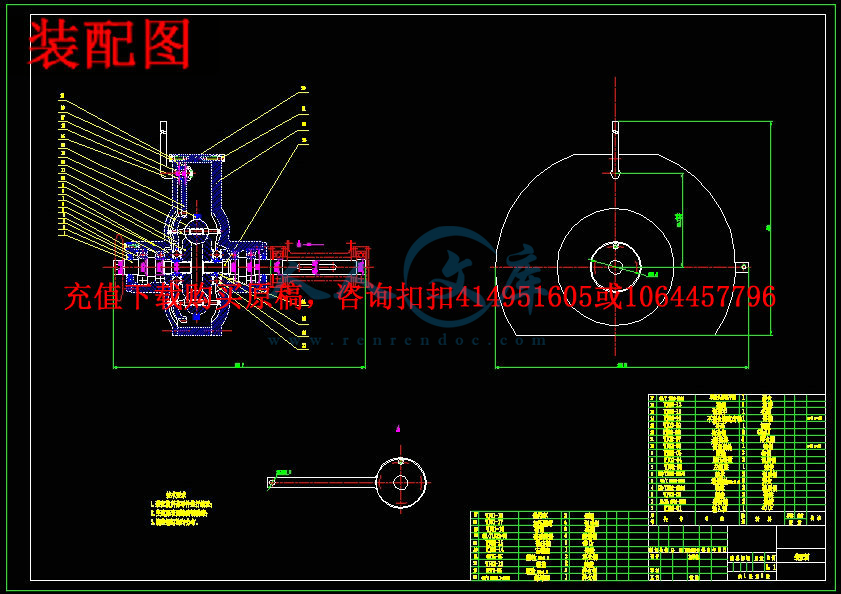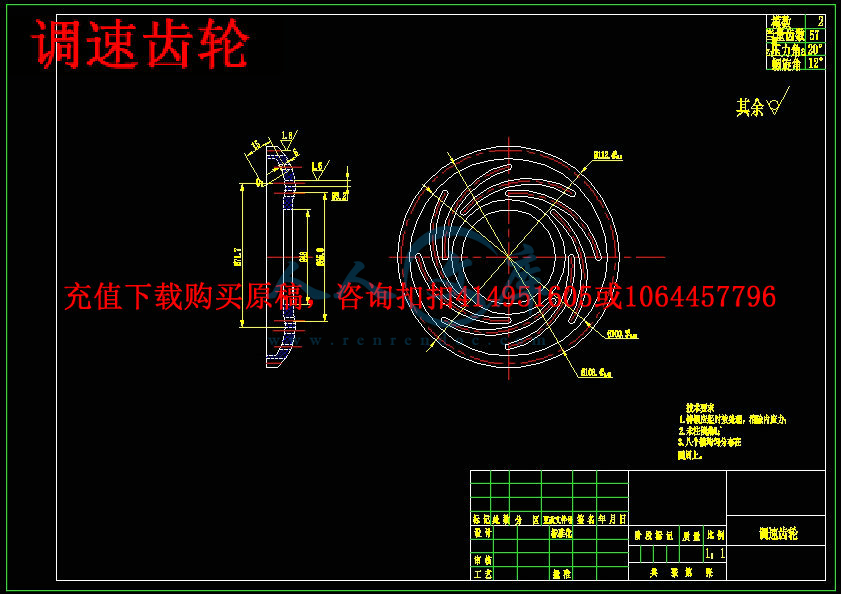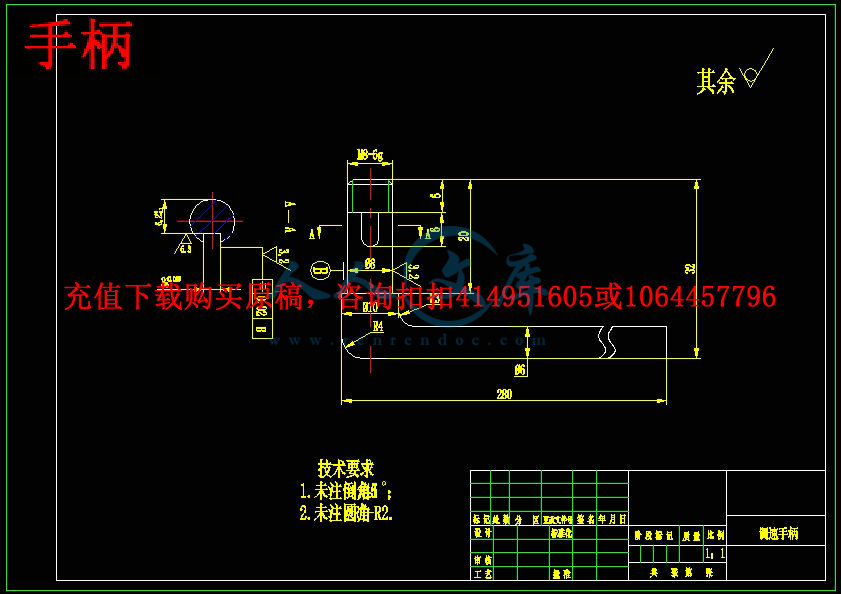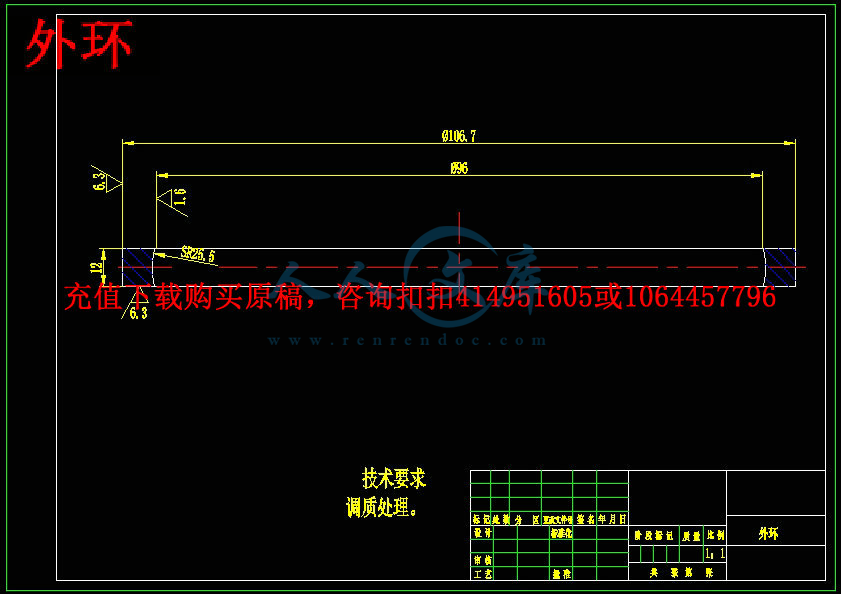摘要
本课题的主要研究内容是无级变速自行车设计。传统自行车在使用过程中比较费力,并且还达不到自己想要的车速。本文鉴于上述原因,并且在分析无级变速器和自行车的基础上,将钢球外锥式无级变速器进行改装,从而形成自行车无级变速装置。该装置通过八个钢球利用摩擦力将动力进行输入和输出,用一对斜齿轮进行分度调速,从而使自行车进行无级调速,达到预想的效果。
关键词:无级变速、自行车、无级变速器
ABSTRACT
The main contents of this paper is continuously variable bicycle design. In the course of a conventional bicycle more demanding, and has not yet reached their desired speed. In view of the above article, and the CVT based on the analysis of the bicycle and the outer cone CVT ball be modified to form a bicycle CVT. The device will be using friction ball through eight power input and output, with a pair of helical gear indexing speed, so that the variable speed bicycle, to achieve the desired effect.
Keywords: CVT, bicycles, transmission
目 录
摘要I
ABSTRACTI
第1章绪论3
1.1 自行车的发展概况3
1.2 机械无级变速器的发展概况4
1.3 无级变速自行车研究现状5
1.4 无级变速自行车的研究意义及实用价值7
第2章 无级变速器总体方案的选择8
2.1 钢球外锥式无级变速器8
2.2钢环长锥式无级变速器9
2.3方案的分析与确定9
第3章 无级变速器部分零件的设计与计算10
3.1 钢球与主﹑从动锥齿轮的设计与计算10
3.2增压盘的设计与计算11
3.3输入轴的设计与计算12
3.4输出轴的设计与计算15
3.5输入﹑输出轴上轴承的选择与计算17
3.6输入﹑输出轴上端盖的设计与计算19
3.7调速齿轮上变速曲线槽的设计与计算19
3.8调速机构的设计与计算21
3.9无级变速器的安装22
第4章 结论23
参考文献24
第1章绪论
1.1 自行车的发展概况
自行车的诞生与发展已有几百年了,在自行车的发展历程中自行车的结构有过几次重大的变化,这些变化使自行车的设计发展中出现过“山穷水复疑无路,柳暗花明又一村”。每一次重大的变化都是自行车的设计思想上的一个大的突破,每一次大的变化都使自行车的发展进入了一个新时代。
1791年,法国人西弗拉克发明了最原始的自行车。它只有两个轮子而没有传动装置,人骑在上面,需用两脚蹬地驱车向前滚动。
1801年,俄国人阿尔塔马诺夫设计出世界上第一辆用踏板踩动的自行车。1817年德国人德雷斯在自行车上装了方向舵,使其能改变行使方向。
1839年,苏格兰人麦克米伦制造出木制车轮,装实心橡胶轮胎、前轮小、后轮大、坐垫较低、装有脚踏板和曲柄连杆装置,骑者可以双脚离开地面的自行车。同年,麦克米伦又将木制自行车改为铁制自行车。
1867年,英国人麦迪逊设计出第一辆装有钢丝辐条的自行车。
1869年德国斯图加特出现了由后轮导向和驱动的自行车,同时车上采用了滚动轴承、飞轮、脚刹、弹簧等部件。
1886年英国人詹姆斯把自行车前后轮改为大小相同,并增加了链条,使其车型与现代自行车基本相同。
1887年,德国曼内斯公司将无缝钢管首先用于自行车生产。
1888年英国人邓洛普用橡胶制造出内胎,用皮革制造出外胎,,以次作为自行车的充气轮胎。从此,基本奠定了现代自行车的雏形。时至今日,自行车已成为全世界人们使用最多,最简单,最实用的交通工具。也许人们应该永远记住这些自行车的发明者们,他们的名字,丝毫不亚于汽车的发明者卡尔、本茨。
随着自行车的诞生也兴起了自行车运动。1868年在法国举行了世界上首次自行车比赛,赛程为2公里。1893年第一届世界业余自行车锦标赛创办,1895年第一界世界职业自行车锦标赛创办,1896年自行车比赛被列为奥运会冲要比赛项目。至尽各类自行车比赛多达几百个,其中尤以行程3900公里的环法自行车大赛最为著名。
自行车诞生于欧洲,但20世纪却在亚洲的中国获得了前所未有的普及和发展。现在中国的自行车产量、消费量、出口量均居世界第一。中国老百姓拥有5亿多辆自行车,年出口达到2000万辆。从某种意义上说,中国是一个自行车王国。每天清晨和落日时分,滚滚车流在中国的城市中移动,这是最为壮观的一道风景,这是一条现在中国流动的长城。
50年代,自行车还是较为稀少的宠物。60、70年代,自行车已经在人们的生活中占有重要位置,缝纫机、手表、自行车被列为三大件,成为一个家庭是否富裕的象征。人们谈论“飞鸽、永久”,不啻于今天人们谈论“捷达、富康”,谁家的自行车丢失了,公安局,派出所会立刻侦破。在以轿车为高官专属的年代,自行车是百姓的自豪。80,90年代,自行车的生产发生了巨大的变化,千篇一律的老样式被五光十色的新式自行车代替。“飞鸽、永久”也不在独享殊荣。山地车、变速车、高档赛车、电动自行车等遍地开花。过去自行车单一的实用功能衍变出娱乐功能,人们不再仅仅是骑车而是玩车。人们对自行车的认识度也远比50年代多。
















 川公网安备: 51019002004831号
川公网安备: 51019002004831号